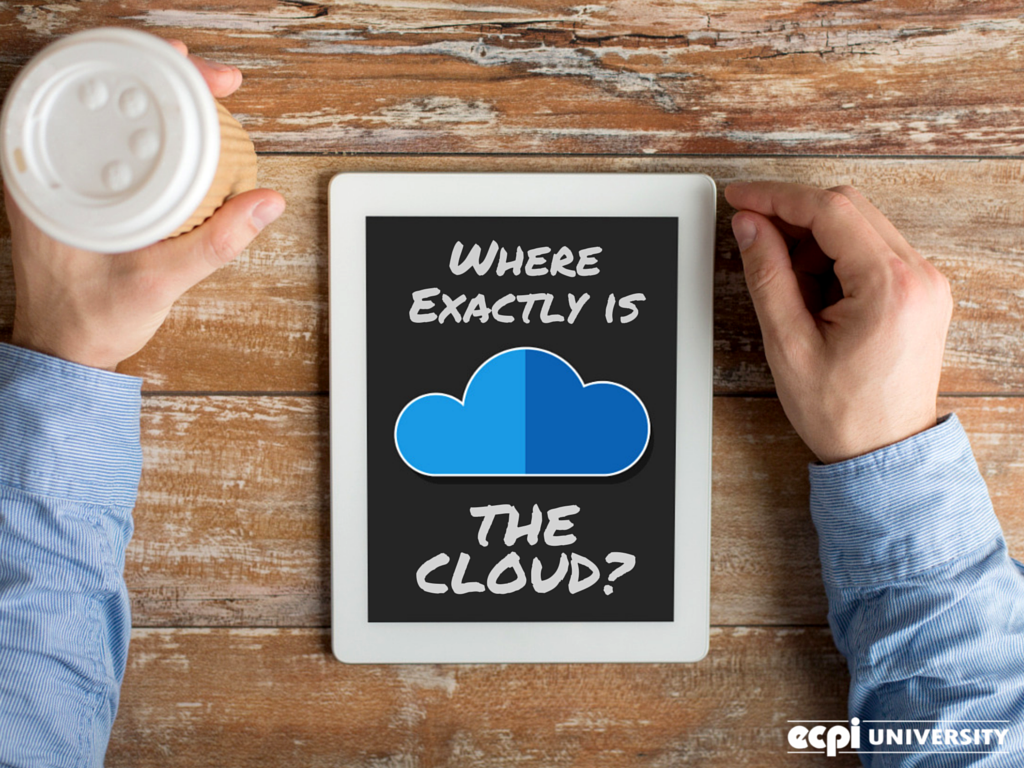
It’s impossible today to have a conversation about data processing, networking, and other computer-based topics without hearing about “the cloud.” In fact, even smartphone users find a number of their apps saved in the cloud and access cloud-based resources. While everyone seems to be talking about the Cloud, a large majority of people don’t really understand what it is.
There is no denying the growth of this new phenomenon. According to a recent article in Forbes, the cloud computing market is growing at an annual compounded rate of growth of more than 30 percent, and is soon to be more than a $100 billion market. All this makes it important to understand the cloud and how it is transforming the world of information processing. Here are seven questions you may have been hesitant to ask:
1. What is the cloud?
Dramatic decreases in the cost of computing power and communications have given birth to huge datacenters that provide significant economies of scale for processing and storing data. For example, the “Google cloud” consists of 13 data centers (with more coming). More than 900,000 servers are contained in these massive buildings and these help create the power for billions of searches. Other companies such as Facebook, Microsoft, and Amazon also create their virtual world with hundreds of thousands of computers linked together to create seamless communications.
2. Is there just one cloud or many different clouds?
As the first question indicates, there are hundreds of different companies operating their own clouds, and they are collectively referred to as “the public cloud.” In fact, many companies operate their own private cloud environments accessible only to clients and customers. Also, many data centers are created to support SaaS applications and other IT needs operating in the cloud on a service basis.
3. How does the term SaaS relate to the cloud?
Until the existence of the cloud, software applications were delivered to individual businesses on disks, CDs, or by downloading. In this traditional approach, the full software application resided in thousands, or even millions, of locations. With software-as-a-service, companies can offer access to the application hosted at a data center.
4. Does the use of SaaS mean giving up control of your applications?
In reality, SaaS apps often provide more security and control to remote users. While there is no local version of the software, it is often easier to gain access to and use the SaaS versions of any application.
Customers have no need for local versions of the app, and the data created by the user is stored either remotely, locally or both. This means the software company can handle upgrades, patches, and other maintenance issues much more efficiently and effectively. At the same time, users have access to the latest versions without the costs and challenges of handling updates and maintenance issues.
5. What other applications are available in the cloud?
Virtually everything that is done with any computer and every application used locally is now available in the cloud. While SaaS is a primary use for businesses, individuals are increasingly using the cloud for everything from storing photos and music to using word processing and other standard applications.
6. Is it safe to use the cloud?
Many companies and individuals have an instinctive concern over storing their information at an unknown, remote location in the cloud. There is also a justifiable fear of data being hacked and stolen, a data center being damaged or destroyed, and other privacy issues.
There is, of course, a risk created by the use of the cloud. However, most experts agree this risk is greatly compensated for in several areas. First, modern cloud-configured data centers use extremely rigorous and state-of-the-art security measures, much greater than the normal small or medium-size business can afford.
Second, data centers operate in a disciplined environment of backups and redundancy that also offer more security than most businesses can afford or establish.
As an additional security plus, cloud hardware and software is constantly updated and upgraded, eliminating one of the greatest security risks to local IT installations and networks.
7. Isn’t the cloud more expensive than local computing?
Instead of charging a one-time fee for an application, cloud-based apps are normally sold on a subscription basis. Both businesses and individuals will often use multiple cloud applications and, increasingly, have a number of cloud subscriptions.
For businesses, evaluating the cost of these subscriptions and cloud services must include the alternative. Installing, operating, and maintaining local computer personnel, hardware, and software is an expensive process. Smaller businesses often have an added expense of contract computer personnel.
The cloud eliminates most of these expenses while ensuring a company is using the latest hardware, software, and networking resources. While total monthly fees may seem excessive, they should be measured against the savings.
Learning how to solder this morning. I'm in love. #Nerd #soldering @ ECPI College of Technology http://t.co/qoUd4NS4J8
— Ash (@OatzTheGreat) December 12, 2014
Get your head in the clouds!
Contact ECPI University to learn more about earning a Bachelor of Science degree in Computer and Information Science with a concentration in Cloud Computing. Through our accelerated, year-round curriculum, you can earn your Bachelor’s Degree in as little as 2.5 years. It could be The Best Decision You Ever Make!
DISCLAIMER – ECPI University makes no claim, warranty or guarantee as to actual employability or earning potential to current, past or future students or graduates of any educational program we offer. The ECPI University website is published for informational purposes only. Every effort is made to ensure the accuracy of information contained on the ECPI.edu domain; however, no warranty of accuracy is made. No contractual rights, either expressed or implied, are created by its content.
For more information about ECPI University or any of our programs click here: http://www.ecpi.edu/ or http://ow.ly/Ca1ya.


